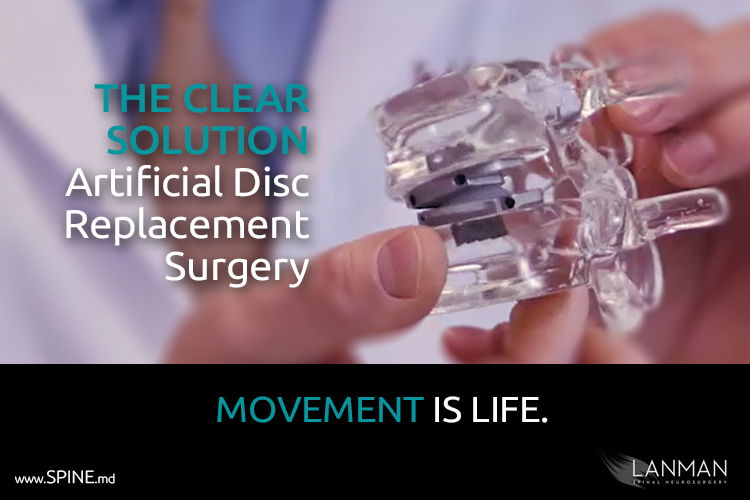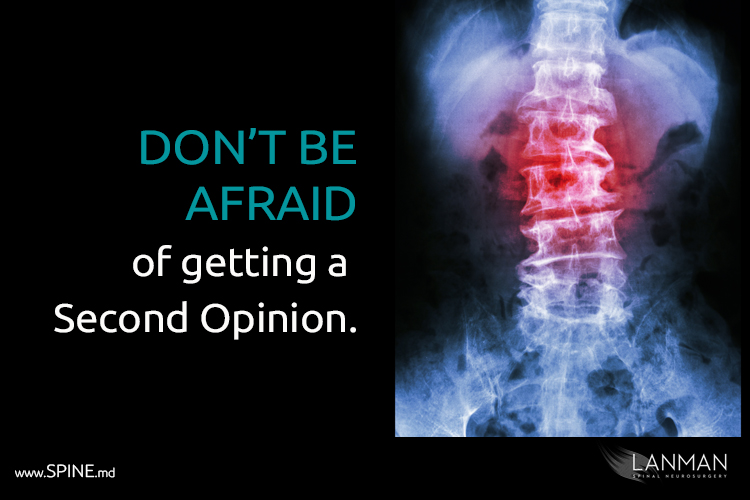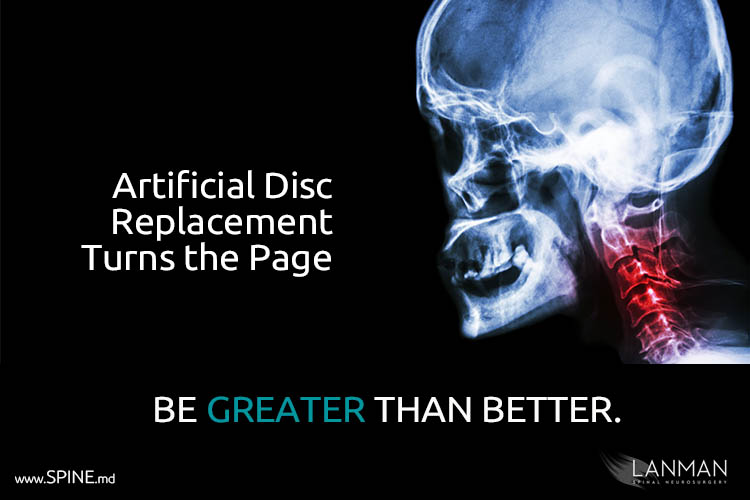Only artificial disc replacement offers the promise of preservation of the natural range of motion of the spine.
Imagine what your spine does. It’s a marvelous system that flexes, twists, stretches, and bends all the while protecting and projecting the spinal cord down the middle of your back. That incredible range of functionality and flexibility you enjoy throughout your whole life depends upon that single complex assembly of bones (vertebrae), muscle, tendons, and cartilage.
Between the bones are the discs that act as cushions while they hold the bones in their place and ensure that we never bend or twist too far to damage the spinal cord and extending nerves. It’s those nerves that get all the focus. They form the connection between the brain and the rest of the body. But to do that, they have to pass through and around those bones.
As we age, that wonderful articulating spinal system begins to break down. Often, we’ll see a disc degenerate in some way or herniate. When that happens, the spacing between the vertebrae is compromised, and nerves may begin to rub against bone. If the impingement is in your neck, you’ll feel soreness in your shoulder, persistent aching. If in the lower back, you’ll feel it in your buttocks and along the sides of the legs.
As time goes by, the degeneration will grow worse, and a total collapse of the disc is possible. Even before that painful experience, you may experience tingling in the extremities, burning sensation along the nerve path, and numbness. By that time some form of surgery is all but inevitable.
When a patient gets to this point, there are really only two surgical options available: spinal fusion or artificial disc replacement. Both are invasive procedures. They also offer the promise of alleviating you of the painful discomfort of advanced spinal disc degeneration. But they have entirely different ways of reaching that goal.
Spinal fusion requires that the surgeon bolt plates and metal structure into at least two of the vertebrae. Then the surgeon adds a bone graft between the two vertebrae bones to stabilize the structure and give it strength. But picture what happens when we fuse together just two of the bones in your spine. The rest of the spine can continue to turn, bend and twist, but now the levels above and below the fused level must flex more than they have before. In fact, they flex so much more, and the added stress is so much higher than whatever degeneration may be going on in the rest of the spine is accelerated resulting in additional surgery.
Then there’s the other cost: the loss of mobility. With each fusion a patient endures, they lose several degrees of potential movement. The fusions are like a box around the spine. The pain is gone (or reduced), but now the patient can no longer do everything they want. Golfers stop golfing, runners stop running, tennis players stop playing and sometimes they stop walking altogether.
Artificial disc replacement is “pro-motion.” I’ve seen hundreds of fusion patients at my practice in Beverly Hills, CA. I’m also an associate professor at the UCLA Department of Neurosurgery and faculty at Cedar-Sinai Medical Center in Los Angeles. My advocacy is that when it comes to a treatment plan, we can always do better.
With artificial discs, we replace damaged discs with artificial ones. The vertebrae may function as close to normal as possible. That means patients can continue to do all the things they love doing, and most of all – they keep moving.
The long-term picture for artificial disc replacement is just as promising. Earlier this year, I led a seven-year clinical study where we compared outcomes for patients who had spinal fusion against those who had artificial disc replacement surgery. What we discovered was that disc replacement surgery produces better long-term patient outcomes over spinal fusion in all measurable areas, including fewer revision surgeries, lessened pain, and neurological impact (numbness, tingling in extremities).
One more significant point: patients have been receiving artificial discs for nearly 40 years outside the US; artificial cervical discs were approved by the FDA in 2007. So this is not experimental. This is not a trial concept. This is real medical science, advancing and making patients greater than better.







